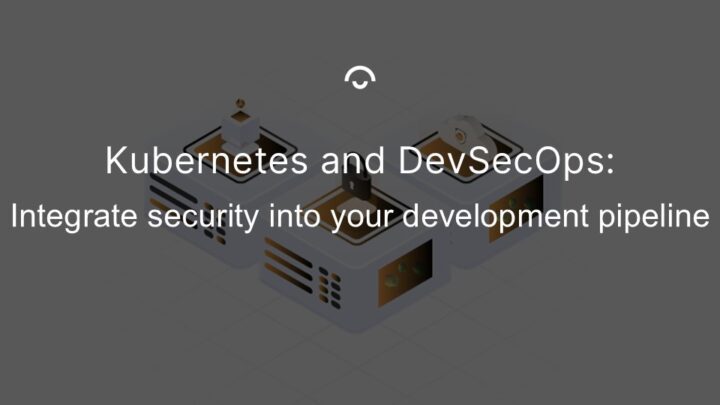OpenStack is the world's most widely used cloud platform. The open source nature of OpenStack makes it a flexible and customisable environment with many possibilities, but if you're thinking of implementing the platform for your project, it's also important to keep an eye on the challenges that may arise. In this article, you will learn what you need to consider in terms of security, scalability and compatibility when you start using OpenStack, and how to avoid the most common risks for a successful implementation.
Things to consider when implementing OpenStack
OpenStack is the world's most widely used open source cloud platform. One of the reasons for its popularity is that the open common standard makes it easier for users to move freely between different cloud environments. Open source also provides many customisation options.
While there are many benefits to OpenStack, it is also important to keep an eye on the challenges that may arise during implementation. To guide you to a successful use of the platform, we'll go through the most common mistakes and how to avoid them so that you can have a successful cloud deployment.
Have the right knowledge and budget when implementing OpenStack
OpenStack is a modular solution that is broken down into several components for specific functions and needs. For example, the Nova compute service that creates and manages virtual servers, the Cinder object and block storage service, and the Horizon web interface service, to name a few. This gives you the freedom to customise OpenStack to your needs, but it can also be a lot to keep track of.
OpenStack's versatility comes with a complexity that requires a lot of technical knowledge. Especially when configuring the different modules to work harmoniously together. As a user, you are faced with having to train your staff in Python (the primary language of OpenStack) and open source technologies, among others, or to bring in the expertise required for successful planning, implementation and operation.
There are several ways to tackle this challenge and be well prepared for the implementation of OpenStack:
- Set aside a budget to hire the expertise you need for your project. Alternatively, hire consultants who specialise in the field and can implement and manage your OpenStack environment. This will save you time and ensure you get it right first time.
- Train your team. There are many good OpenStack training programmes. There is also a large community of users, developers, companies and organisations involved in developing OpenStack who share their knowledge, support and advice.
- Choose a managed OpenStack service or an on-demand provider. You'll get the support you need to implement and manage your OpenStack environment. The time and hassle you save by avoiding learning curve hassles and time-consuming troubleshooting quickly pays off. You'll be up and running in no time and with no hassle.
Challenges of standardisation and interoperability
Open source has many advantages, but it also means that there is not much standardisation. Services and support may be different depending on the version. It can also mean that problems occur when integrating existing hardware and software with OpenStack. This in turn can lead to you spending a lot of time finding the right support, or investing in new hardware and software to make it work and fully utilise the features.
You can solve this challenge by:
- Be involved in developing OpenStack yourself. It's open source, and if you have coding skills, you can develop what you need to get the right features and stability.
- Use a cloud management platform to help you manage your OpenStack environment.
- Use a service provider for a managed OpenStack environment. You won't have to worry about how to implement, manage and monitor your environment. You get the features and stability you need without having to do it yourself.
Keeping up with the evolution of OpenStack
The exciting thing about an open source solution is that things are constantly happening. There is a large and active community around the platform that is constantly contributing and developing. The downside of continuous development is that it can lead to unexpected problems if you are not aware of what is happening and how it affects your particular environment.
Have a strategy on how to deal with this. For example, by:
- Research and plan. Get familiar with the platform, how it develops and what potential risks and issues it poses to your environment. Evaluate your infrastructure and software compatibility, find out what could potentially cause downtime and other technical difficulties to identify potential issues before implementation. Then develop a plan to address any challenges such as outages and disruptions.
- Use a cloud management platform with resources to monitor your OpenStack environment so you can quickly identify and fix issues. Alternatively, set up your own monitoring system.
- Use a managed service. In this case, the provider manages and monitors your OpenStack environment so you can focus entirely on your project. Most services have advanced monitoring for safe operation, and also a backup strategy.
Scalability and OpenStack
OpenStack is designed to be scalable. This is one of its main advantages and makes it a great solution for smaller projects as well as large environments. However, scaling up doesn't just mean that you need to add more resources. You also need to make sure that there is an underlying architecture that supports an increased load. This requires good planning right from the start.
Keep this in mind to be well prepared for future scaling:
- Be clear in defining your goals and what your plans are for your OpenStack environment. This will help you plan for high availability and scalability from the start. For example, planning for redundancy and infrastructure design that can be easily scaled out as needs increase.
- Implement a management and monitoring solution. This will help you gain insights and plan for capacity, performance, etc. OpenStack has tools such as its own measurement and monitoring tools, but additional, more granular tools may be needed.
- Hire a hosting service with the ability to add more resources on-demand. This gives you a quick and easy way to scale up when you need it.
More tips and advice for a successful OpenStack implementation
- Be sure you're clear from the start what you're going to use OpenStack for. Is it for a test environment or a production environment? What kind of workloads will be running?
- Review the hardware requirements. What is required for your needs?
- Think about security. Unsecure APIs and weak passwords can lead to breaches. Follow Zero Trust principles with limited access for each service, use encryption and authentication, and utilise a logging and monitoring system to quickly detect threats. Keep up with the release of updates so you don't fall behind on important security patches.
- Document thoroughly from the start. It makes everything easier from implementation and management to maintenance, integrations and scaling.
-
Find out what's best for your needs. Deploying your own OpenStack environment is suitable for those who have a complex IT infrastructure with a need for high customisation and control, have large computing needs, and if you have access to expertise in cloud services and open source technologies. Renting a managed OpenStack service is suitable if you have limited expertise, simpler IT resources, and if smooth and secure use is more important than control.
Binero and OpenStack
At Binero, we strongly believe in openness and flexibility. That's why our high-performance and scalable cloud service is based on OpenStack. With open source and open APIs, you get access to a common and open standard that gives you the freedom to move between different cloud environments without being locked into a particular technology. If you want to know more about how OpenStack and open source can be used as a success factor for your digital journey, and how you can get the benefits of the platform without having to deal with the challenges - contact us and we will help you!


